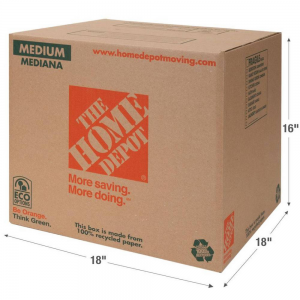 Summer is here and moving season is in full swing as many families relocate while school is out to ease the transition for their children. The moving process can be overwhelming especially due to the infrequency of moves for most people. Between determining the right supplies to use to adequately protect family heirlooms and other treasured items as well as managing the emotions that big family changes may elicit during life transitions that prompt the move in the first place, it is common to underestimate what moving and storage products are needed to simplify the process, prevent damage, and have a better experience.
Summer is here and moving season is in full swing as many families relocate while school is out to ease the transition for their children. The moving process can be overwhelming especially due to the infrequency of moves for most people. Between determining the right supplies to use to adequately protect family heirlooms and other treasured items as well as managing the emotions that big family changes may elicit during life transitions that prompt the move in the first place, it is common to underestimate what moving and storage products are needed to simplify the process, prevent damage, and have a better experience.
As the supplier of 100% recycled moving boxes and other moving storage supplies for The Home Depot, we have compiled the following tips to help make moving a less stressful process.
Pay Attention to Safety: The moving process requires everything from carrying furniture and heavy boxes to wielding utility knives and navigating stairs and doorways while trying not to drop or damage anything. This is often done while people are tired or emotionally drained from the process. Be extra careful to keep the floor clean of packing supplies, walkways clear, items well secured in trailers and trucks, avoid over packing boxes, use lifting tools such as hand trucks and furniture dollies, and be sure to plan plenty of rest into the driving schedule. Paying attention to these details will go along way toward a safe and frustration free move.
Have the Right Supplies on Hand: A little extra padding, heavy duty boxes and some extra time packing valuables such as dishes, electronics, mirrors and pictures, collectibles and any other sentimental possessions is time and attention well spent. Consider packing your most valuable possessions first, leaving durable items such as clothing, bedding, toys, books and documents for later in the process. That way the most valuable items receive the most attention while you’re still fresh and focused. There is a sense of calm that comes from knowing that the most important possessions received the attention they needed. Once the most important items are packed, rest of the process will feel like coasting downhill.
Optimize Space in the Truck: Pack the truck by box size. Group all box sizes together keeping small, medium and large boxes together. This will also ensure that the walls and seams of each box align with the box under and above it, which is the strongest stacking pattern. Start with heavy duty boxes, packed with the heaviest contents at the bottom of the stack and work to lighter, standard duty boxes toward the top of the stack. This will help prevent any crushing and minimize the opportunity for any tipping to occur. In general, placing smaller boxes toward the front of the truck and larger ones near the rear is a good technique to help stabilize the stacks as larger boxes are typically the most stable when stacked.
Pack Similar Items Together: Items like clothing, furniture, kitchen items, and electronics should be kept together for more efficient packaging and easier unpacking. For clothing, wardrobe boxes are quick to assemble and allow clothing to stay on hangers. This will save time packing and eliminate ironing at the unpacking phase. Furniture is typically among the most expensive and easiest to damage of everything being moved. Often beds and tables will need to be disassembled to fit through doorways and to efficiently be packed into the moving truck. Place all bolts or assembly hardware in a zip-top bag and secure it directly to each furniture piece so they are readily available when it’s time to reassemble. When it comes to the kitchen, there are many options available to protect dishes and other kitchen items such as foam pouches, rolls of dish foam and glass divider kits. Use heavy duty boxes for the heavy or fragile items and standard ones for most pots and pans, towels, supplies, food items and utensils. Electronics like televisions are large fragile items that are expensive to replace. Be sure to wrap any electronics in pink anti-static bubble cushion or anti-static foam. There are box systems designed specifically to protect a variety of sizes of flat screen TVs and use heavy duty boxes for extra protection of valuable electronic equipment.
Plan for More: Plan for more than you think: While not always possible, start the packing process as early as feasible. It always seems to take longer than expected and requires more supplies that most people estimate. In partnership with The Home Depot, we’ve developed a quick and simple moving calculator at HDMoving.com to help determine what boxes and accessories you’ll need for your move. Answering a few simple questions will allow the app to provide a tailored supplies list that will help you to have enough boxes as well as remember to plan for many of the situations mentioned above. Take home more supplies than you think you need since any unused supplies can be easily returned. Few things are more frustrating than getting down to the last bit of packing, late at night and running out of packing supplies.